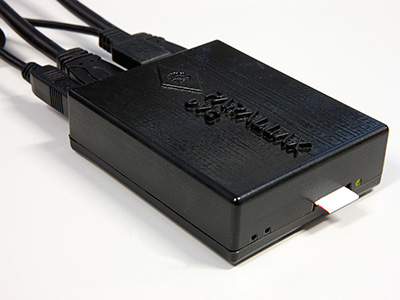Defence tech arm reveals spy-stopping device
 Scientists from Australia’s Defence Science and Technology Group have showcased a unique computer security device that provides protection against cyber intrusion.
Scientists from Australia’s Defence Science and Technology Group have showcased a unique computer security device that provides protection against cyber intrusion.
The Digital Video Guard (DVG) is a small device that allows internet transactions, content and applications to be secured when using untrusted computing infrastructure.
It can decrypt, verifying the integrity of, and display content independent of the computing infrastructure being used.
The DVG is installed between a host computer and an external digital display.
The device displays a “trust’ indication – via an integrated LED – to the user to indicate that the DVG is operating and the integrity and confidentiality of the displayed information is intact and reliable.
While developed with defence in mind, the device can be used to secure content delivered over untrusted networks for the banking and finance industry and the medical industry.
The biggest threat to internet banking is the loss of logon details, which occurs predominantly through keystroke loggers or phishing attacks where a user is redirected to a fake logon screen.
The DVG protects against these attacks and secures logon details, account information and authorisation of transactions.
The DVG can also be used to secure content sent via email or instant messaging applications. By sending an encrypted image within a normal email, a DVG can protect the confidentiality of the email.
A key feature of the device is that it can be adapted to operate with desktop, laptop or embedded directly into tablet devices.
Another key feature is the zero software footprint; it does not require client software installation or drivers and can operate alongside existing applications without compromising security goals.
Years of hard work have gone into the development of the device, which provides a viable commercial security solution for a broad range of applications.
In 2014 the scientists who designed and developed the DVG won South Australia’s ‘Research and Development iAward’ for innovation in ICT.







 Print
Print